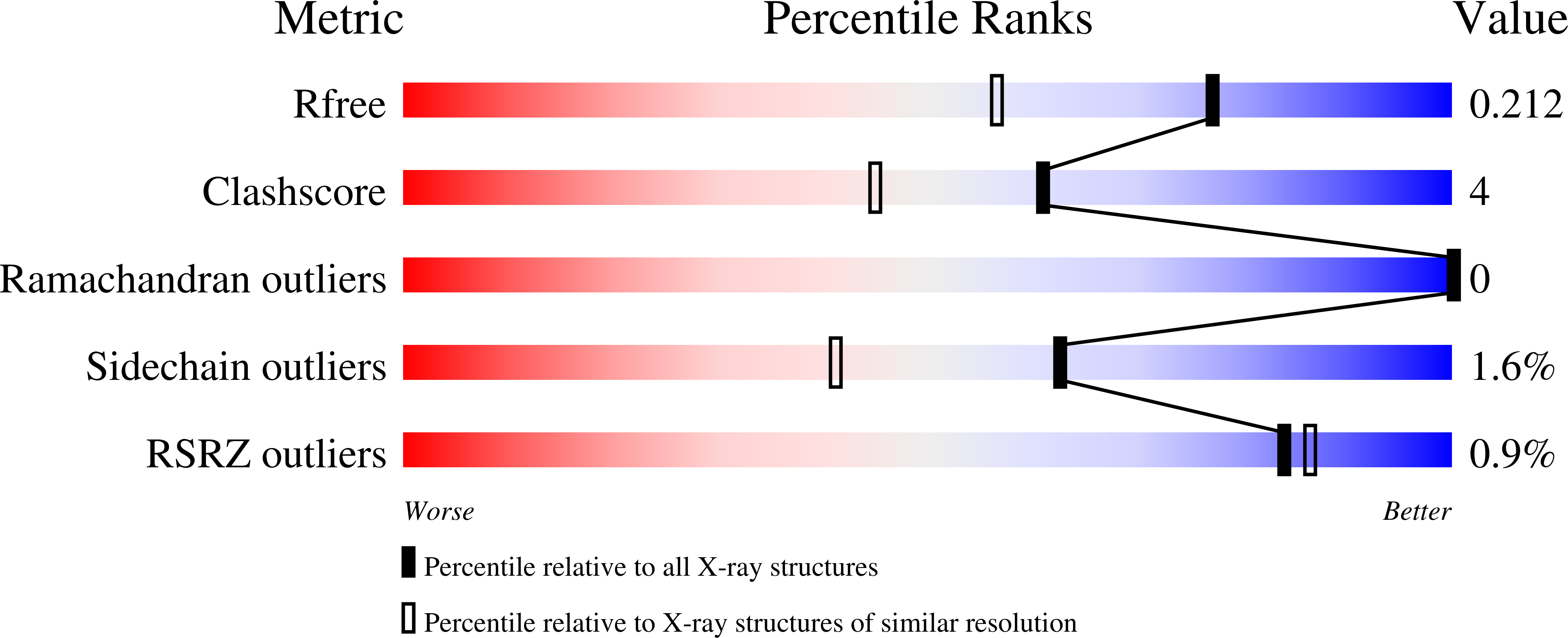Molecular Recognition at the Active Site of Catechol-O-methyltransferase (COMT): Adenine Replacements in Bisubstrate Inhibitors
Ellermann, M., Paulini, R., Jakob-Roetne, R., Lerner, C., Borroni, E., Roth, D., Ehler, A., Schweizer, W.B., Schlatter, D., Rudolph, M.G., Diederich, F.(2011) Chemistry 17: 6369-6381
- PubMed: 21538606
- DOI: https://doi.org/10.1002/chem.201003648
- Primary Citation of Related Structures:
3NW9, 3OE4, 3OE5, 3OZR, 3OZS, 3OZT - PubMed Abstract:
L-Dopa, the standard therapeutic for Parkinson's disease, is inactivated by the enzyme catechol-O-methyltransferase (COMT). COMT catalyzes the transfer of an activated methyl group from S-adenosylmethionine (SAM) to its catechol substrates, such as L-dopa, in the presence of magnesium ions. The molecular recognition properties of the SAM-binding site of COMT have been investigated only sparsely. Here, we explore this site by structural alterations of the adenine moiety of bisubstrate inhibitors. The molecular recognition of adenine is of special interest due to the great abundance and importance of this nucleobase in biological systems. Novel bisubstrate inhibitors with adenine replacements were developed by structure-based design and synthesized using a nucleosidation protocol introduced by Vorbrüggen and co-workers. Key interactions of the adenine moiety with COMT were measured with a radiochemical assay. Several bisubstrate inhibitors, most notably the adenine replacements thiopyridine, purine, N-methyladenine, and 6-methylpurine, displayed nanomolar IC(50) values (median inhibitory concentration) for COMT down to 6 nM. A series of six cocrystal structures of the bisubstrate inhibitors in ternary complexes with COMT and Mg(2+) confirm our predicted binding mode of the adenine replacements. The cocrystal structure of an inhibitor bearing no nucleobase can be regarded as an intermediate along the reaction coordinate of bisubstrate inhibitor binding to COMT. Our studies show that solvation varies with the type of adenine replacement, whereas among the adenine derivatives, the nitrogen atom at position 1 is essential for high affinity, while the exocyclic amino group is most efficiently substituted by a methyl group.
Organizational Affiliation:
Laboratorium für Organische Chemie, ETH-Zürich, Wolfgang-Pauli-Strasse 10, 8093 Zürich, Switzerland.


















